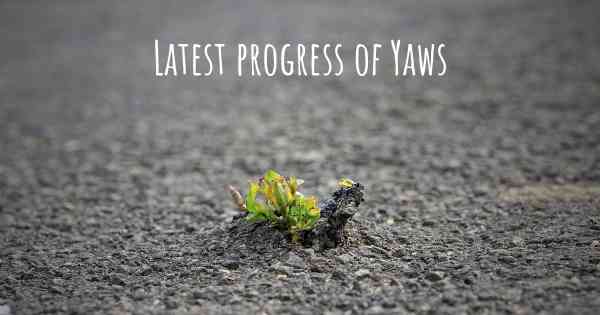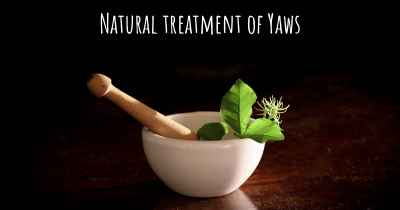What are the latest advances in Yaws?
Here you can see the latest advances and discoveries made regarding Yaws.

Yaws, also known as frambesia tropica, is a chronic infectious disease caused by the bacterium Treponema pallidum pertenue. It primarily affects the skin, bones, and cartilage, leading to disfiguring and debilitating symptoms if left untreated. Although Yaws was once prevalent in many tropical regions, concerted efforts have significantly reduced its global burden over the past few decades. However, recent advances in research and treatment have further improved our understanding and management of this neglected tropical disease.
1. Diagnostic Innovations:
Accurate and timely diagnosis is crucial for effective Yaws control. Traditional diagnostic methods, such as serological tests, have limitations in terms of sensitivity and specificity. However, recent advances have introduced more reliable and accessible diagnostic tools. One notable innovation is the use of loop-mediated isothermal amplification (LAMP) technology, which allows for rapid and field-friendly detection of T. pallidum pertenue DNA. LAMP-based tests have shown promising results in various settings, enabling early detection and targeted treatment.
2. Antibiotic Treatment:
Antibiotics play a crucial role in Yaws treatment, aiming to eliminate the bacterium and prevent disease progression. Historically, penicillin has been the drug of choice. However, due to challenges in resource-limited settings, where Yaws is most prevalent, alternative treatment options have been explored. Recent studies have demonstrated the efficacy of azithromycin as a single-dose oral treatment for Yaws. This antibiotic offers advantages over penicillin, such as improved compliance, simplified administration, and reduced risk of allergic reactions. The introduction of azithromycin has revolutionized Yaws treatment, particularly in remote areas with limited healthcare infrastructure.
3. Enhanced Surveillance:
Effective disease surveillance is essential for monitoring Yaws prevalence, identifying hotspots, and guiding intervention strategies. Traditional surveillance methods relied on time-consuming and resource-intensive surveys. However, recent advances in technology have facilitated the implementation of mobile health (mHealth) solutions for Yaws surveillance. These solutions leverage smartphone applications and cloud-based data management systems to streamline data collection, reporting, and analysis. By enabling real-time monitoring and rapid response, mHealth tools have significantly improved the efficiency and accuracy of Yaws surveillance, ultimately supporting targeted interventions.
4. Integrated Approaches:
Yaws control efforts have increasingly embraced integrated approaches that address not only the disease itself but also its social and environmental determinants. Recognizing the importance of community engagement, recent initiatives have emphasized community-led interventions for Yaws prevention and control. These interventions involve raising awareness, promoting hygiene practices, and empowering communities to take ownership of their health. Additionally, integrating Yaws control with existing programs for other neglected tropical diseases, such as leprosy and lymphatic filariasis, has shown promising results in terms of cost-effectiveness and sustainability.
5. Vaccine Development:
The development of a safe and effective Yaws vaccine remains a priority in the fight against this disease. Vaccination offers the potential for long-term protection and could contribute to Yaws elimination. Recent research efforts have focused on identifying suitable vaccine candidates and evaluating their immunogenicity and efficacy. Several vaccine candidates, including recombinant proteins and whole-cell inactivated vaccines, have shown promise in preclinical and early clinical trials. While challenges remain in terms of vaccine formulation, production, and delivery, ongoing advancements bring hope for the future availability of a Yaws vaccine.
In conclusion, recent advances in Yaws research and treatment have significantly contributed to the global efforts to eliminate this debilitating disease. Innovations in diagnostics, antibiotic treatment, surveillance, integrated approaches, and vaccine development have collectively strengthened our ability to control Yaws and improve the lives of affected individuals. Continued investment in research, healthcare infrastructure, and community engagement is crucial to sustain these advancements and ultimately achieve the goal of Yaws eradication.








